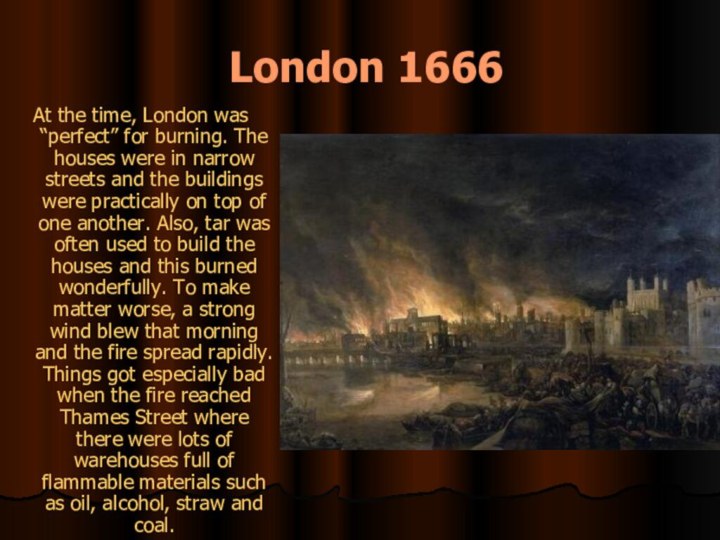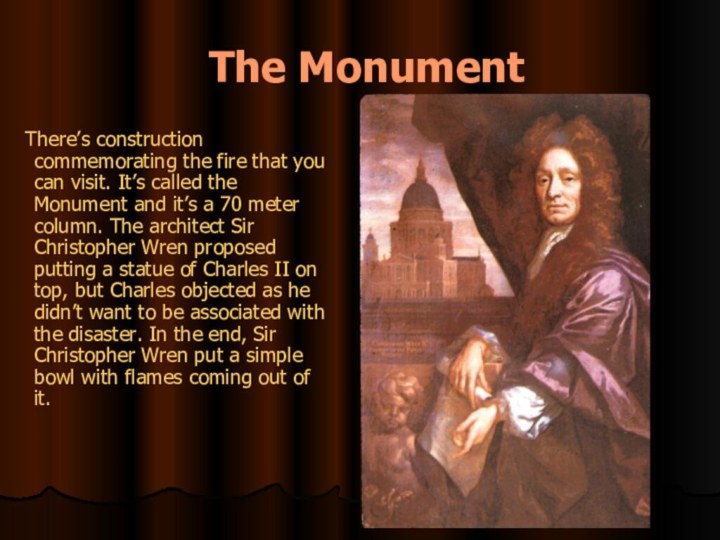- Главная
- Разное
- Бизнес и предпринимательство
- Образование
- Развлечения
- Государство
- Спорт
- Графика
- Культурология
- Еда и кулинария
- Лингвистика
- Религиоведение
- Черчение
- Физкультура
- ИЗО
- Психология
- Социология
- Английский язык
- Астрономия
- Алгебра
- Биология
- География
- Геометрия
- Детские презентации
- Информатика
- История
- Литература
- Маркетинг
- Математика
- Медицина
- Менеджмент
- Музыка
- МХК
- Немецкий язык
- ОБЖ
- Обществознание
- Окружающий мир
- Педагогика
- Русский язык
- Технология
- Физика
- Философия
- Химия
- Шаблоны, картинки для презентаций
- Экология
- Экономика
- Юриспруденция
Что такое findslide.org?
FindSlide.org - это сайт презентаций, докладов, шаблонов в формате PowerPoint.
Обратная связь
Email: Нажмите что бы посмотреть
Презентация на тему к уроку по теме: Лондон горит. 8 класс.
Содержание
- 2. The FireThe fire started on the night
- 4. London 1666At the time, London was “perfect”
- 6. The Fire Burns The man
- 7. The Fire BurnsHe went back to sleep,
- 8. Pepys’ ViewOur best account of the Fire
- 9. Pepys’ View Here are some more
- 11. The Cost The fire destroyed much of
- 12. St. Paul’s ruins
- 14. The Benefit However, there is a
- 15. The Monument There’s construction commemorating the
- 16. Скачать презентацию
- 17. Похожие презентации
The FireThe fire started on the night of the 2nd of September 1666 in a house that belonged to Thomas Farynor. He was the king’s official baker. One night, Thomas finished work and prepared to leave.
















Слайд 4
London 1666
At the time, London was “perfect” for
burning. The houses were in narrow streets and the
buildings were practically on top of one another. Also, tar was often used to build the houses and this burned wonderfully. To make matter worse, a strong wind blew that morning and the fire spread rapidly. Things got especially bad when the fire reached Thames Street where there were lots of warehouses full of flammable materials such as oil, alcohol, straw and coal.
Слайд 6
The Fire Burns
The man in
charge of dealing with the fire was Mayor Budworth.
At first he didn’t take the fire very seriously, and apparently said the infamous words:“A woman might piss it out!”





























